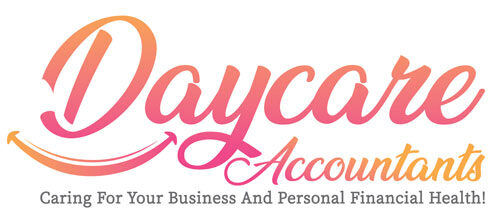FOUR (4) Ways to Lower Your Childcare Start-up Costs.

You have made your decision… You are ecstatic to launch your family childcare program. Congratulations! What comes next?
Are you concerned about how to fund your family childcare business?
You must consider start-up costs as unavoidable expenses that must be incurred to open your program. Meanwhile, there are ways to manage them to get the most out of your resources while also benefiting from tax deductions.
Essentially, licensing, health and safety, insurance, equipment, advertising, home repairs, home improvements, learning materials, toys, professional development, among others are all key components of start-up costs for your Childcare business.
However, you do not need to check off every item on this list before you begin your business. Firstly, you need to obtain your license, insurance coverage, health and safety, and equipment. You can always consider adding the remaining items as your business grows.
Here Are Four (4) Ways To Lower Your Start-Up Costs:
1) Equipment – To start with, you may use your neighborhood playground and acquire other tools such as computers and furniture in a more flexible and/or cost-effective manner. Thus, costs are reduced by purchasing less expensive equipment at yard sales and shopping at thrift stores. This will allow you to obtain reasonably priced, high-quality furniture and equipment.
As a licensed Childcare business owner, you are also eligible for government grants that do not require repayment. Please read from the website below to learn about how to access grants to cover your business’s utilities, rent, and facility maintenance, among other things.
2) Food Cost – You can reduce the food costs for your childcare business by partnering with your local school district for breakfast and lunch delivery. You can also apply for the Child and Adult Care Food Programs, such as the one described on the website below.
https://smallbusiness.chron.com/government-daycare-center-grants-12723.html
3) Learning Materials – You can acquire relevant teaching and learning materials such as books, audiovisuals, art materials, toys, etc., in a more affordable way by signing up for books and toys exchange. You could also obtain these materials by asking family and friends and using your local library resources.
Getting a lot of toys, may not be the best option. More information can be found here.
4) Supplies – Here are few suggestions:
· Always make proactive decisions in terms of purchasing items for your Childcare program.
· Get into the habit of buying in bulk and taking advantage of discounted sales opportunities, vouchers, and coupons.
· Make every effort to avoid purchasing supplies that are not required or needed.
· Examine what is essentially relevant to optimize storage and space in your Childcare center.
Meanwhile, you can investigate other resources available to you, such as your local family childcare associations and referral agencies. Also, working with professionals in taxation, accounting, and insurance can help guide you on how to maximize output at minimum resource costs.
Additionally, if you have made efforts to reduce your startup costs by using your personal savings and still needs funds, consider other options such as:
§ Selling items in your household that you no longer need online, at yard sales, on consignment, or at thrift stores. This will help you create additional cash to fund the start-up costs.
§ Reaching out to your friends, family, and coworkers for assistance in establishing your childcare business. This is another way to advertise your childcare program.
§ Contacting your local credit union for a start-up loan, as their interest rates are typically lower than those of credit cards. This will reduce your long-term cost of borrowing.
It is important to remember that you are running a business, and the long-term impact and success of the business should be your top priority, rather than treating it as a sideline. Managing a childcare business, like any other business, provides tax benefits. In the first year of operation, you can deduct up to $5,000 in start-up costs. Any amount over $5,000 can be depreciated over time. However, you must keep accurate track of, and record these expenses as well as the related supporting documentation.
To assist you in this area, I have created a checklist and a tracking tool to track your start-up costs so that you are ready for taxes at the end of the year to optimize your tax deductions.
If you are interested in getting this checklist, please Email [email protected] and write CHECKLIST_1
To Your Success,
Irma Oke, CPA
Daycare Accountants
The CPA Queen for Daycare Centers
1531 Rockville Pike # 1021, Rockville, MD 20852
Ph: 888 362 7701 Fax: 443 703 2291
[email protected]
